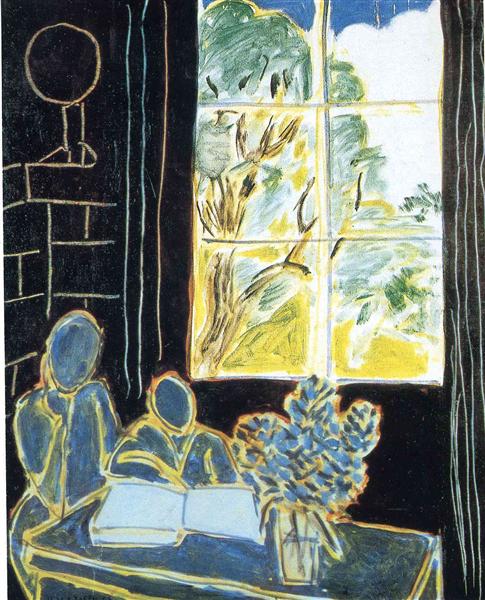Description
Henri Matisse, a name that resonates strongly in the realm of modern art, lived a life of constant creative evolution. In 1947, he presented a work whose serene complexity challenges our perception: "The Silence that Lives in Houses." This piece, measuring 49x60 cm, manages to encapsulate not only Matisse's technical mastery but also his ability to convey emotions through simplicity.
The painting shows an intimate and evocative interior scene, a common characteristic in many of Matisse's works from this period. The atmosphere he creates invites us to immerse ourselves in contemplative silence. A female figure is perceived, sitting serenely, immersed in a space of clean lines and soothing colors. The absence of excessive details in the environment allows the viewer to focus on the stillness and introspection that seem to emanate from the main figure.
The use of color in "The Silence that Lives in Houses" is a statement in itself. Matisse opts for a palette dominated by soft and pastel tones that infuse the scene with a sense of calm. Reds, greens, and blues are used sparingly, creating a chromatic balance that contributes to the introspective atmosphere. These colors are not merely decorative but serve to accentuate the contained emotions and the delicate balance of the represented space.
The composition of the work reflects Matisse's mastery and confidence in handling space and form. Although the scene seems simple at first glance, it is evident that every line and area of color has been carefully considered to maintain complete harmony. The female figure, rendered with secure and skillful strokes, embodies a serene presence that integrates perfectly into the environment, enhancing the feeling of silence and calm that gives the work its name.
It is interesting to remember that in the 1940s, Matisse was in a period of exploration that led him to simplify forms and focus more on the purity of color and line. "The Silence that Lives in Houses" is a testament to this artistic evolution, where simplification is not synonymous with diminishment but with deepening the essential. This radically simple approach allows the viewer to connect deeply with the work, allowing silence to become another character in the composition.
"La Musique" (1910) and "The Red Studio" (1911) are earlier examples where Matisse already showed a tendency to emphasize the use of color and the simplification of forms. However, "The Silence that Lives in Houses" takes this exploration a step further, reducing the scene to the minimum necessary to convey a profound sense of serenity.
In conclusion, Henri Matisse's "The Silence that Lives in Houses" is not just a painting but an aesthetic experience that invites reflection and calm. Through simplicity and mastery in the use of color and composition, Matisse offers us a painting in which inner silence becomes palpable, resonating with those who take the time to contemplate it. It is a work that, true to its title, manages to capture and convey the essence of the silence we live in everyday spaces, turning the ordinary into something extraordinary.

